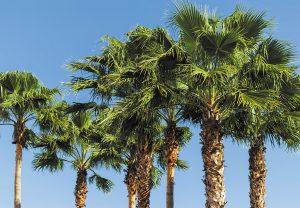 Florida is known for its beautiful palm trees. One species of palm that is popular in Tallahassee is the sabal palm. This palm has a deep-rooted history in this state that you may not know about, and it continues to thrive today. Did you know that the sabal palm is the state tree? Here are some facts about our state tree that showcase its history and adaptability.
Florida is known for its beautiful palm trees. One species of palm that is popular in Tallahassee is the sabal palm. This palm has a deep-rooted history in this state that you may not know about, and it continues to thrive today. Did you know that the sabal palm is the state tree? Here are some facts about our state tree that showcase its history and adaptability.
The sabal palm, also known as the sabal palmetto and the cabbage palm, has been in Florida for hundreds of years. It is native to the state, unlike most other palm trees that are popular in Florida. It was of great use to Native American tribes and the early settlers in Florida. Both groups used the different parts of the tree for various things. The leaves were used to make baskets, hats, brooms, and even tabletops. The trunk and leaves of the palm would be used to create shelter, and the fibrous parts would be used to make cordage, or rope, which was useful in many ways. Native Americans also used the sabal in some of their medicines; the seeds and berries were used for fever, headaches, sickness, and even loss of weight. In addition, people would eat the edible bud, also called the heart of the palm. However, this is dangerous to the tree, as removing the bud will kill the palm. The edible bud tastes similar to cabbage, which is why the sabal palm got the nickname cabbage palm. It’s important to note that although parts of the palm may be edible for humans, the sabal palm is highly toxic to pets. The sabal palm is home to many Florida birds that use it for shelter as well.
In June of 1953, the sabal palm was decided as our state tree. It was not the only choice of tree to be considered for the state tree. It actually took years for them to decide on it, as there were a few other trees in mind. The sabal palm replaced the coconut palm on the state seal in 1970. A fun fact is that the sabal palm is also the state tree of South Carolina.
The sabal palm can grow to be 50 to 70 ft tall and 12 to 18 ft wide. This tree takes a while to grow, but it is very adaptable and easy to take care of. It can grow in almost any soil, and since this tree is pest and disease free, it is easy to keep alive. The leaves only need to be trimmed annually. Another good thing about this tree is that it is very drought and salt tolerant. They are known to be fire tolerant as well. One fun fact about this tree is that it can live and recover through almost any trauma and storm, with the ability to survive through hurricanes, thunderstorms, and more.
With a rich history in this state, the sabal palm has been useful to all that inhabit Florida, from indigenous tribes and settlers to birds, for decades. This tree can survive through almost anything and is a popular decoration in many landscapes. Its adaptability and low maintenance will help keep it alive for many more years to come. ![]()
Jade Paredes
Home & Yard Magazine




